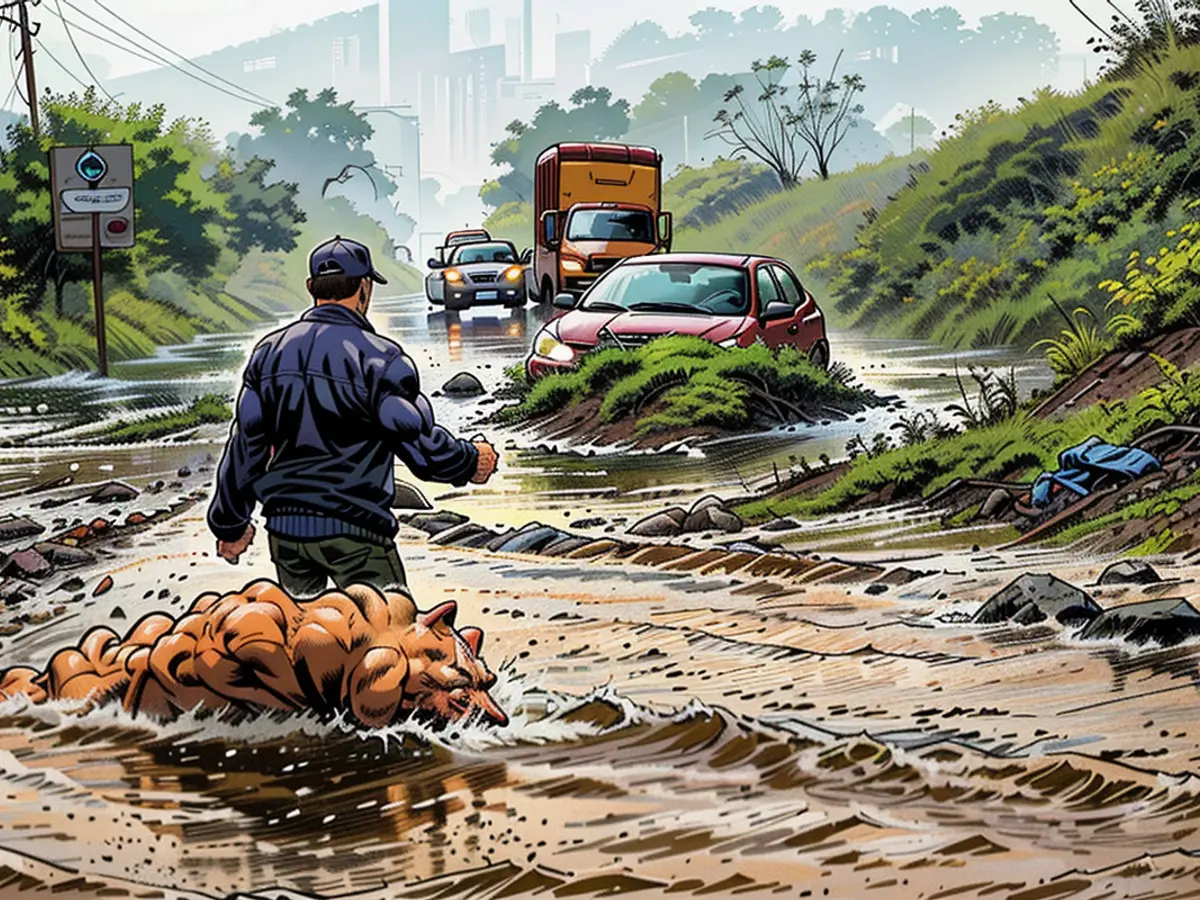- Once more, Summer 2024 endures excessive heat.
The summer of 2024 in Germany was remarkably warmer than usual. According to preliminary assessments from the German Weather Service (DWD) in Offenbach, this was evident with temperatures averaging 18.5 degrees Celsius, which was 2.2 degrees higher than the standard from 1961 to 1990. When compared to the more recent and warmer reference period from 1991 to 2020 (17.6 degrees), the difference was 0.9 degrees. Thus, while 2024 wasn't the hottest summer on record, it marked the 28th consecutive warm summer, as reported by the DWD.
However, the summer of 2024 was also notable for its dramatic temperature swings. It started off cool and wouldn't heat up until later. August, in particular, saw a significantly higher than usual temperature deviation, as reported by the DWD. Although there were local instances of heavy rainfall, the sunshine duration remained roughly within expectations.
Warmest summer in the south and east
At the start of the summer, the "Siberian chill" appeared. The coldest temperature was recorded on June 12 in Meßstetten on the Swabian Alb, at a bitter 1.4 degrees. On August 13, the highest summer temperature of the year was recorded nationwide, reaching a scorching 36.5 degrees in Bad Neuahr-Ahrweiler, Rhineland-Palatinate.
The most intense summer heat was felt in the south and east: in the lowlands and river valleys of southern Germany and Saxony, the most hot days were recorded. Waghaeusel-Kirrlach near Karlsruhe and Dresden were cited as examples by the DWD. However, no summer day at all was recorded on Heligoland, and the summer only briefly paid a visit to the coasts.
Water shortage and heavy rain
Rainfall levels were right on average. With 240 liters per square meter, the total precipitation matched both reference periods. However, these averages mask significant regional discrepancies: while over 600 liters fell in Alpine regions, some northeastern areas saw less than 150 liters.
What fell as rain in the drier regions in three months was recorded in select places within a few hours. Trendelburg in northern Hesse reported 169.8 liters per square meter on August 1, while Nordhausen in Thuringia only recorded 114.9 liters on the same day. Raubling-Pfraundorf in Upper Bavaria recorded an extreme 137 liters on June 3. In the Saxon Dippoldiswalde-Reinberg, 106.7 liters were measured on August 18.
15 percent more summer sunshine
The summer sunshine duration exceeded its goal of 614 hours by almost 15 percent, amounting to 712 hours. Compared to the period from 1961 to 1990, the increase was significant. Over 800 hours of sunshine were recorded in parts of Saxony and Brandenburg, while less than 600 hours were reached immediately at the Alps.
DWD meteorologist Marcus Beyer had previously noted that our perception of whether a summer is warm or cold has shifted. What would once have been considered exceptionally warm between 1961 and 1990 no longer feels quite so extreme today. "But if we consider a few years ahead and think about how the hypothetical average from 2021 to 2050 might look with advancing climate change."
The German Weather Service (DWD) attributes the highest summer temperatures of 2024 to the south and east, specifically in the lowlands and river valleys of southern Germany and Saxony, as reported by DWD. Despite the significant increase in summer sunshine hours nationwide, averaging 712 hours, the Alps only reached less than 600 hours, according to the DWD.









